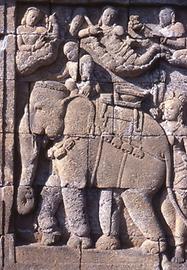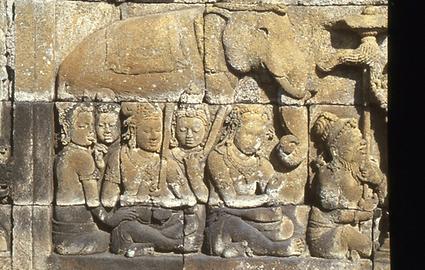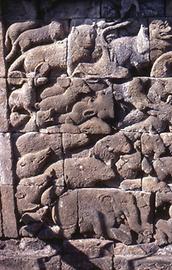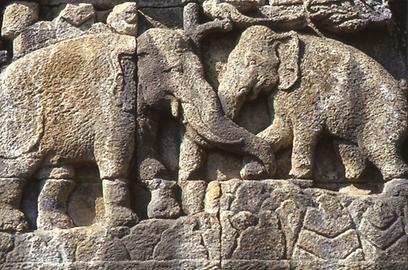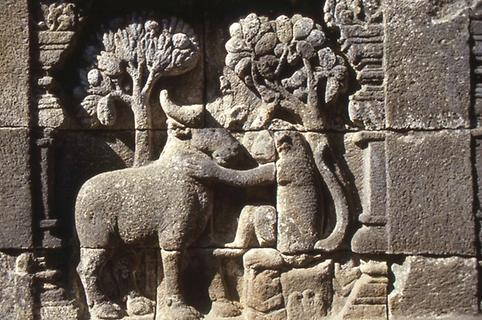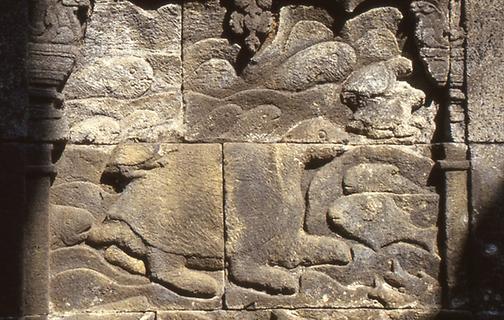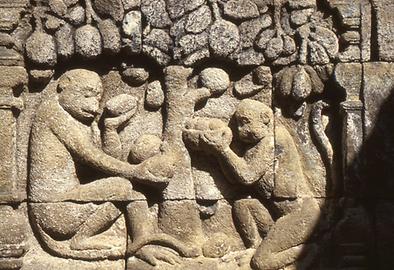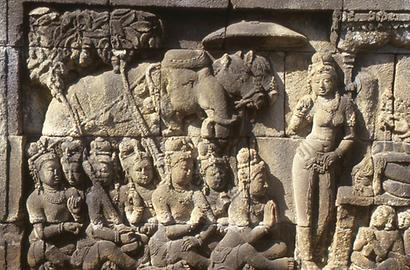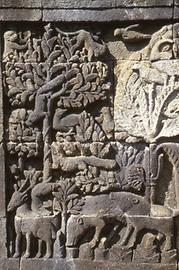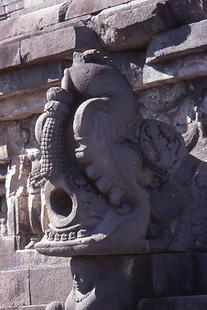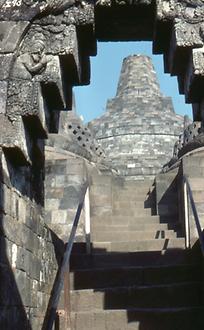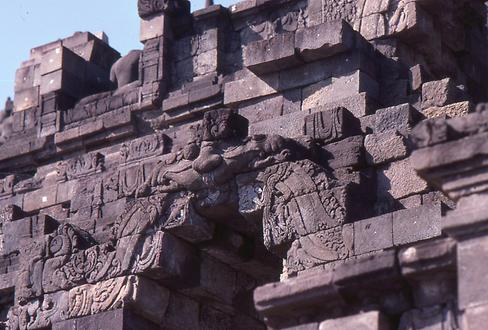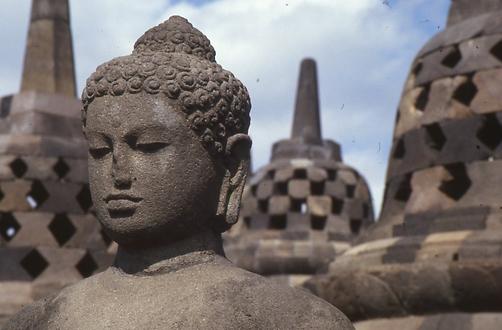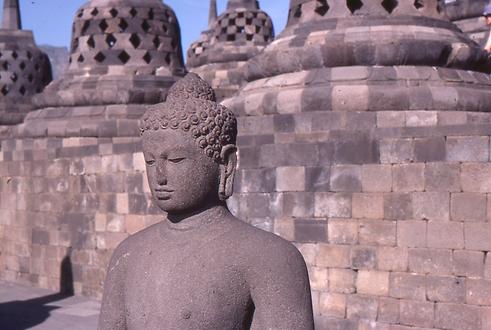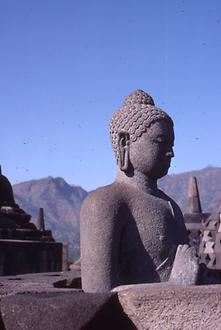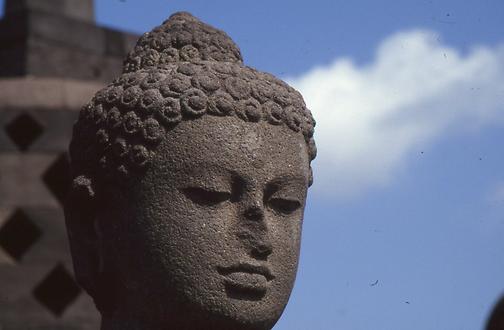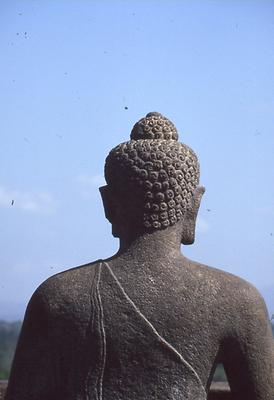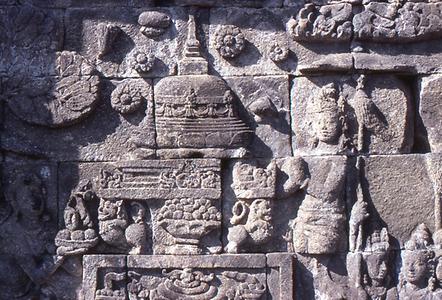The Borobudur on Java#
A picturebook in stone describing the life of Buddha#
The pictures were taken by the author in the years 1976, 1980 and 1987. They are part of the the archive "Picture flood Jontes".
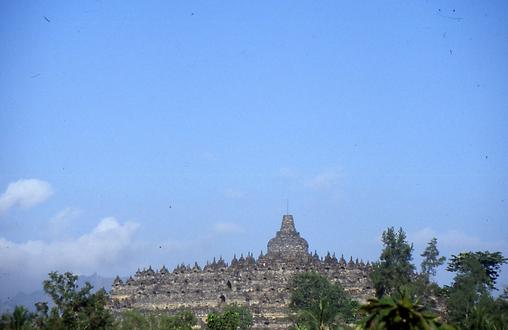
Indonesia Indonesien today is - with its 240 million inhabitants - the most populous Islamic state on earth. This was not always the case. The colonial legacy of Dutch ambitions had been slowly Islamized by merchants from the Arab world in the Middle Ages. A rather moderate style of Prophet’s teachings has been followed which today, however, is increasingly radicalized by external forces. The farther the Islam came to the East, the weaker it became. The islands of Bali and Lombok preserved their Hindu religion and culture. In the first millennium, the main island of Java was captured by Hinduism.
There is little more left in the national religion than the shadow play. However, the facilities of the grand temple complex of the Prambanan still remind us of the unique cultural and artistic power that had its beginning in India.
In addition, South India’s dynasties brought Hinayana Buddhism as of the seventh century AD. There most prominent monument in Southeast Asia is the Temple Mount of Borobudur at Yogyakarta Indonesia, Yogyakarta on the island of Java. After the Islamisation the complex was forgotten so that it was buried in dense layers of volcanic ash and jungle humus. Discovered in 1814, the excavations took place from 1835 onwards. The name appeared for the first time in the book “The History of Java” by the author Thomas Raffle. Boro seems to be the Malayan form bara of Sanskrit vihara meaning monastery. Budur is interpreted as the Balinese beduhur which means "over it". Borobudur seems to be the "temple on the hill".
Borobudur is only situated 25 km from the town of Yogyakarta and is easily accessible via good roads. It can be visited during a day trip. In the meantime, infrastructure of tourism has been developed in close vicinity to the complex. In 1991, the Borobudur has been declared a UNESCO World Heritage Site and has become one of the main destinations of world tourism in Indonesia.
It is assumed that the site was built between 750 and 850 AD by kings of the Buddhist-minded Sailendra dynasty.The outbreak of the most dangerous volcano of Java, the Merapi, was the main reason why the site was covered with ashes and then overgrown with the tropical jungle and simply forgotten.
From far and near, it is perceived as a huge hill with a base of 123m length and nine terraces tapering upwards.
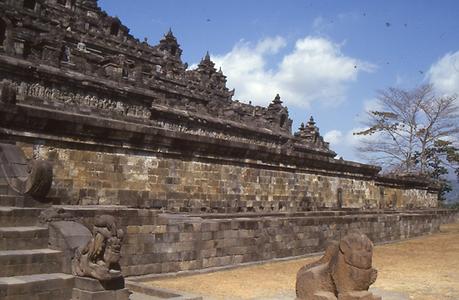
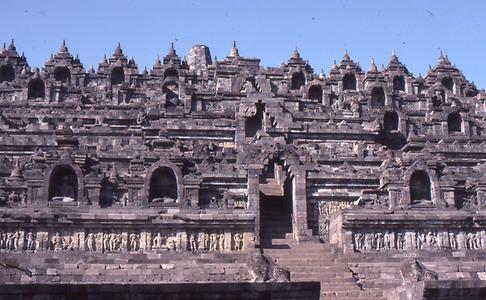

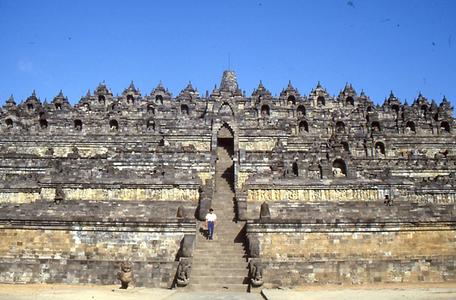

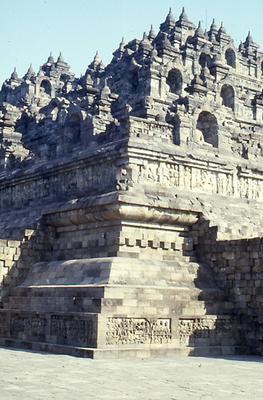
With the help of international aid, extensive restoration work which lasted from 1973 to 1984 was necessary to save this unique structure from decay which had already started. The Borobudur is endangered because of its own structure.

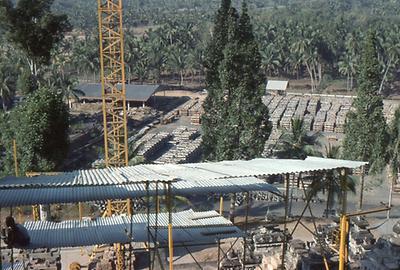
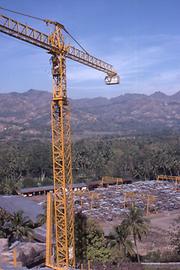
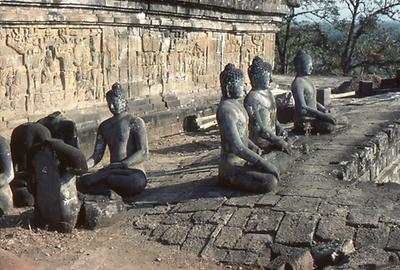

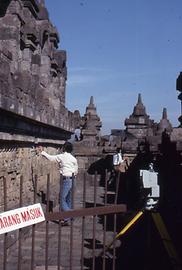
The complex of Borobudur is a central building which has no built foundation, but sits on a natural hill. The hill was surrounded completely by a masonry which, from above, exerts an enormous pressure on the subsoil containing ash and clay. In the course of one and a half thousand years water entered the interior and softened it. The hill began to flow in all directions. The artificial stone installations moved, diverged, the reliefs lost their cohesion. The pictures show the defects which existed before the start of restoration work perfectly.

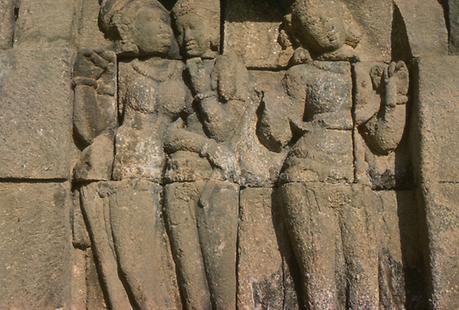

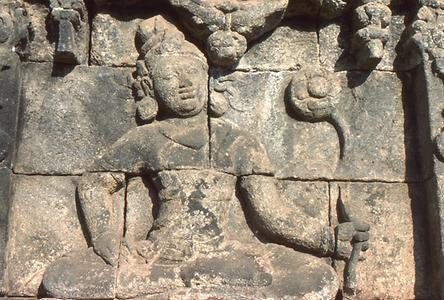

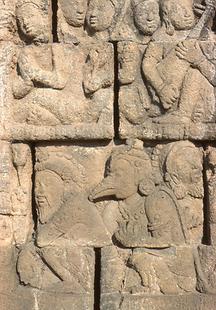
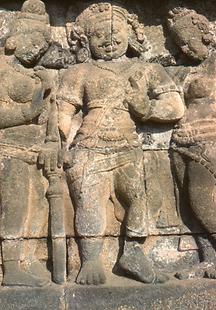
The ingenious builders did foresee the natural changes and tried to prevent the flooding of the hill. A system directed the water to waterspouts which would lead the water outwards,as indeed did happen. The same system was used in Gothic churches to secure the foundations. There was no water system in Borobudur, and the pressure on the lowest wall rose steadily. To prevent the complex to drift apart, an additional wall ring was constructed. They even sacrificed figural relief zones which were found and documented during the last restoration.
The Borobudur consists of nine terraces which are tapered concentrically upwards. There are flat reliefs of almost 5 km in length, showing the life and work of the historical Buddha Shakyamuni according to the ancient Buddha biography of the Lalitavistara. These representations are in 120 main reliefs, while 720 others show the 500 pre-existences before his human birth.
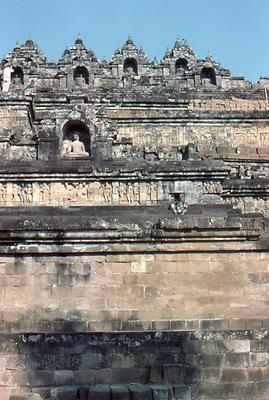
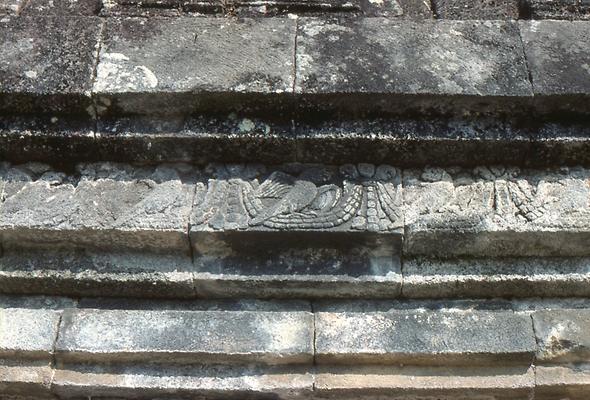

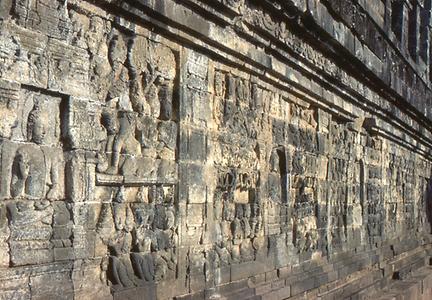
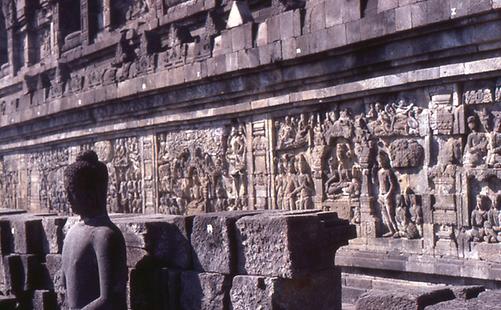
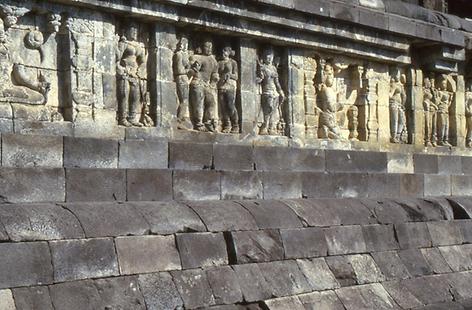
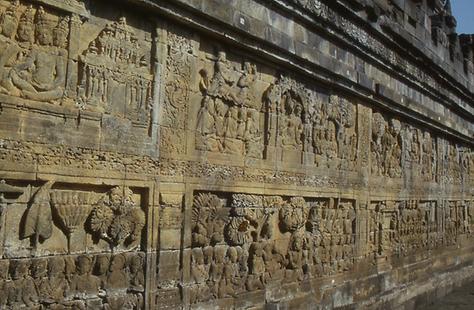
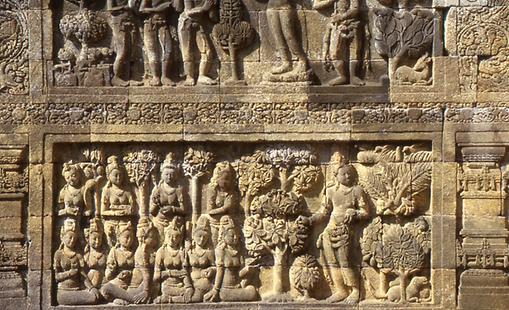
On top of these nine terraces there are another three with 76 stupas which surround the main stupa of 11 m diameter. A path of transformation (skr. pradakshinapatha) allows ritual walking. Stairs lead from the base through elaborately decorated archways to the top.
A stupa is a Buddhist sanctuary designed to walk around in religious medidation. In the interior, sometimes relics are kept in an urn. Originally hemispherical, but then built in various forms its shape recalls prehistoric burial mounds. The interior is not accessible. Gathering religious merits, the believer circumambulates the stupa by turning his right body side towards it. However in Borobudur, the 76 stupas of the highest level are “transparent”. The stupas are made of uniformly shaped stones and contain life-size sculptures of 504 Buddhas in lotus position with various symbolic hand positions (skr. mudra „Siegel“). The sculptures are clearly visible through gaps.
A Buddha can also be recognized by external signs. He has a hairstyle of right-twisted curls and an outgrowth which is regarded as the seat of special human abilities. In reality it is a stylized hair bun (skr. Usnisha) worn by ascetics. His long earlobes indicate that he was once a prince, but as wandering monk had then taken off his jewellery. The point between the eyes (skr. urna) indicates that he has special spiritual abilities.
As an ascetic, he wears a thin robe which leaves the right shoulder free. Even today monks in the South-Asian Hinayana Buddhism dress the same way.
The conversion path (skr. pradakshinapatha) with the stupas of the uppermost terrace is shown in the following pictures.
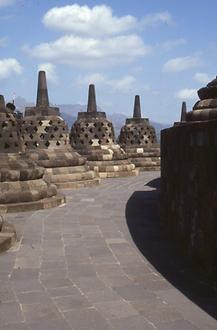
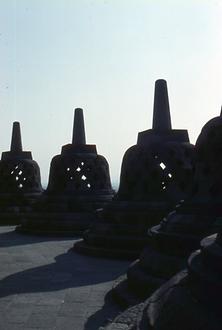


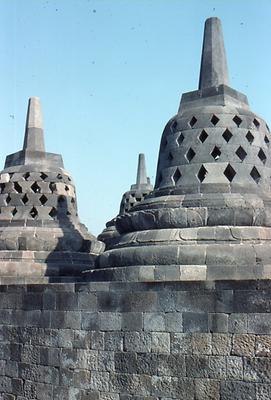
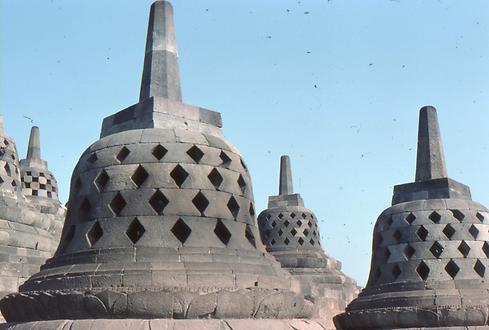





The Borobudur reveals by its construction the cosmic conception of the world of Buddha’s teachings. There are three spheres. The lowest Kamadhatu is assigned to humans and perceptible with their senses. The next level Rupadhatu represents the world of transition in which humans can attain salvation from the eternal cycle of rebirths. In this subtle world, divine beings can appear who reveal themselves to mankind. Finaly, Arupadhatu is the incorporeal world of the highest level, the enlightenment and the distant numina.
There are celestial beings which resemble angels. They fly through the air and live in various sides of the mythical hills as seats for gods.
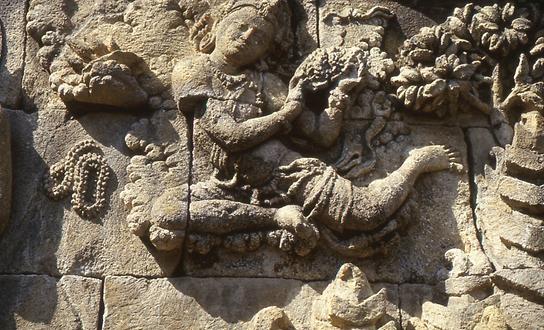
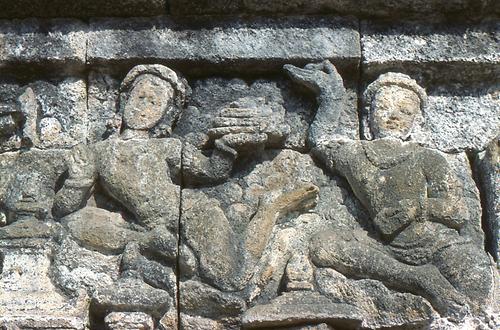

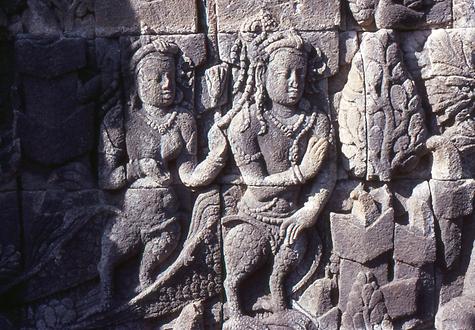
On the Borobudur, the life of the historical Buddha is told and portrayed according to the ancient collection of legends the Lalitavistara. The scenes from life and work of Buddha in the reliefs are a real treasure-chest to understand the details from the court life at the time of the construction of Borobudur. The scenes reflect life with its nice sides during the time when Gautama, the pampered prince from the ancient Shakya dynasty, lived at the parental court and was frightened of everything that brought suffering, disease and death to man. Luxury, sports, music and banquets determined the everyday life of the later Buddha. When he was confronted with this, he renounced this life and became an ascetic. As wandering preacher in North India, he formulated his teachings which would enable humans to find their own path without sufferings and finally find salvation in nirvana. From the very beginning his teachings were interpreted in mythological terms. Like our pictures, they start with a dream of the pregnant mother before the birth and end with the worship of his figure as ideal.
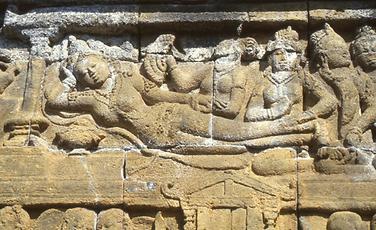
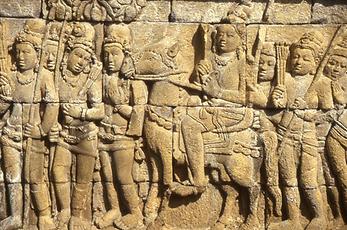
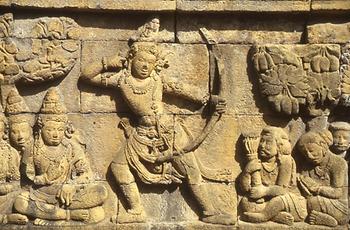
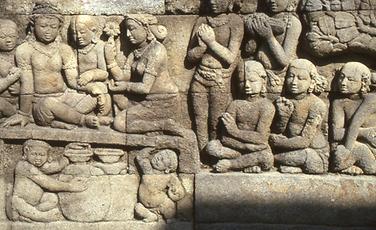
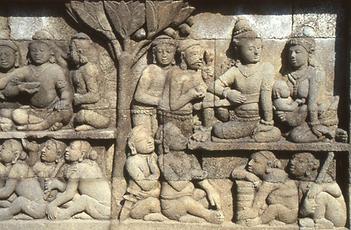
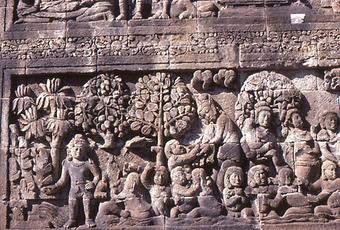
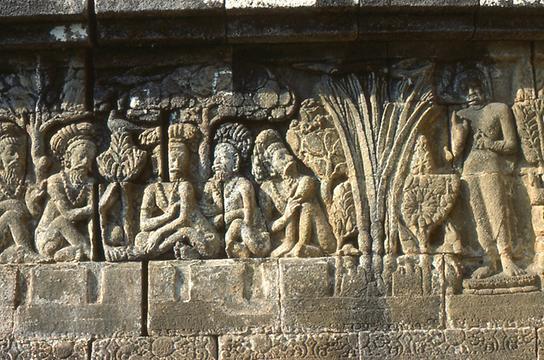
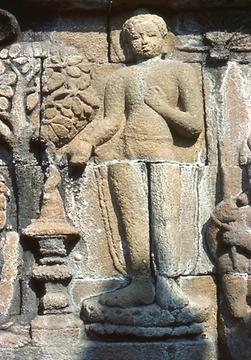
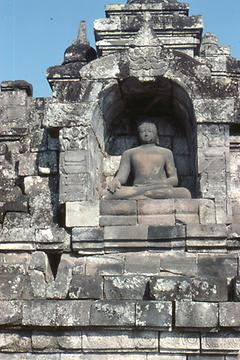
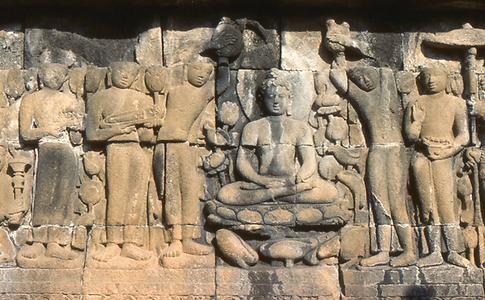


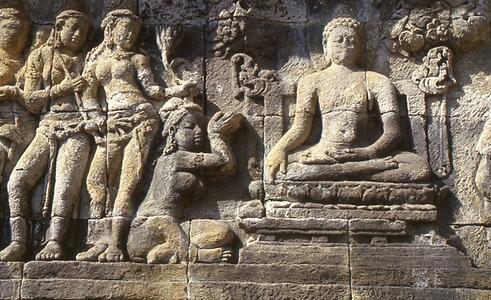

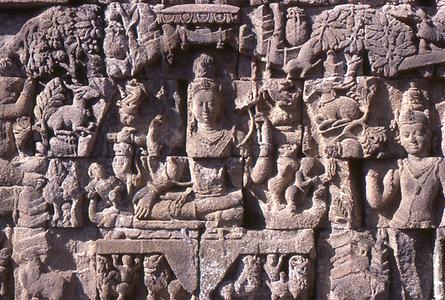
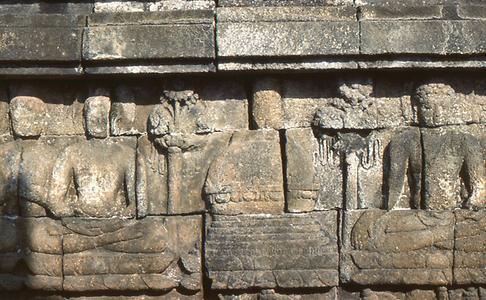
For the worship of Buddha, the image of a stupa can replace the physical representation. After his death, his corpse was burnt as usual, and the remains were given as relics in to various sanctuaries.
The 5000m long relief stripes with their thousands of figures describe in detail the courtly and the folk life at the time of the ancient Sailendra dynasty on Java. Each face seems to be a subtle personal study.
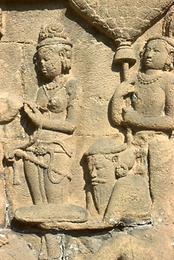
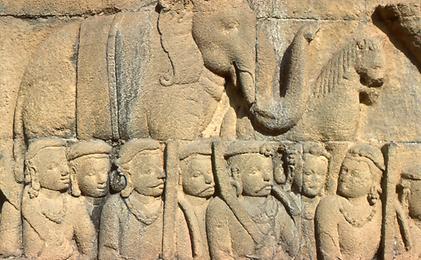
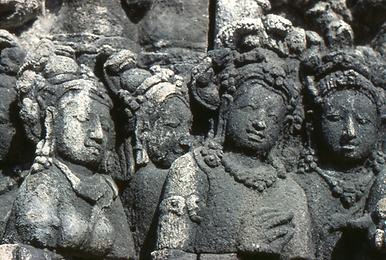

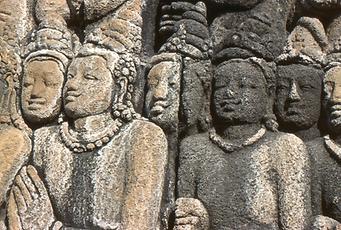
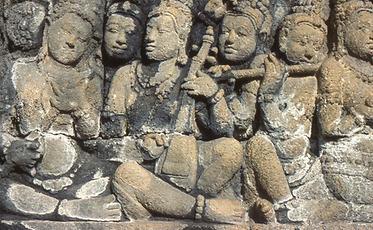


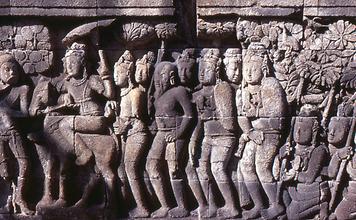
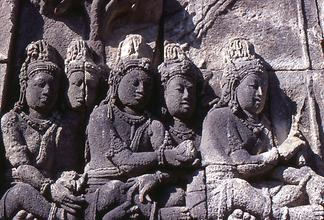
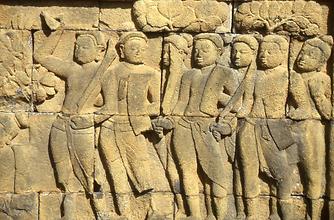

Buddhist philosophy teaches that the historical Buddha Shakyamuni, like every being, had already gone through numerous rebirths. In the Jataka narrations, the karmic quality is described at lenght. Among these pre-existences there are many animals. Especially elephanta play an important role. The animal depictions show the subtle implementation of skillful observation of animals in their natural environment by the sculptors who worked in Borobudur.
